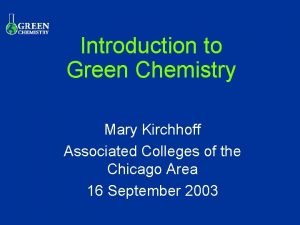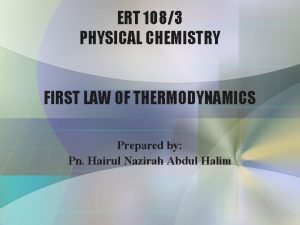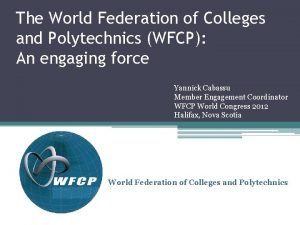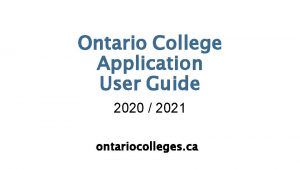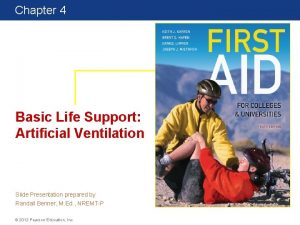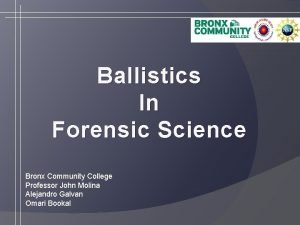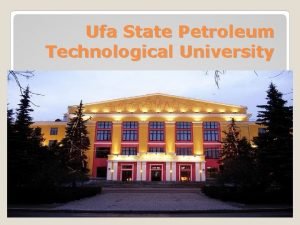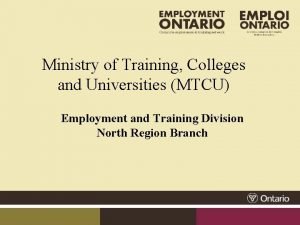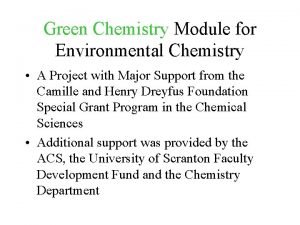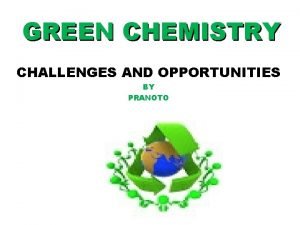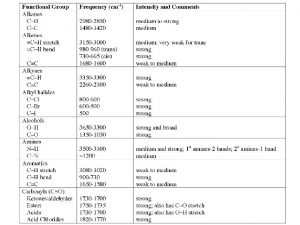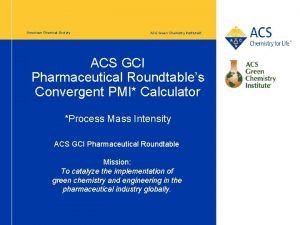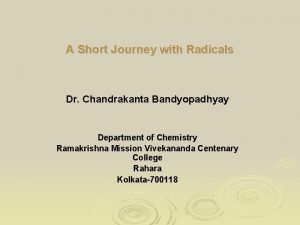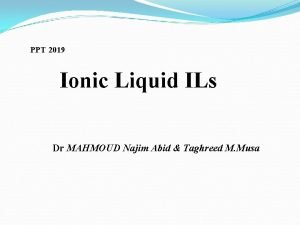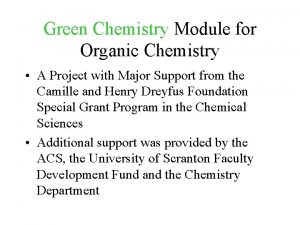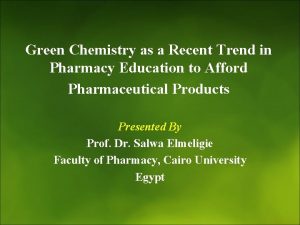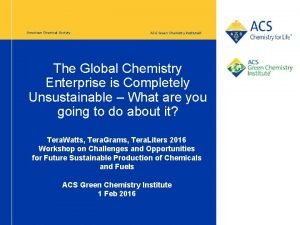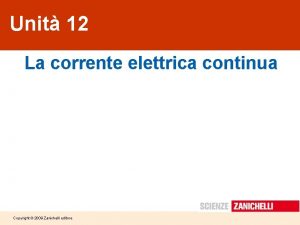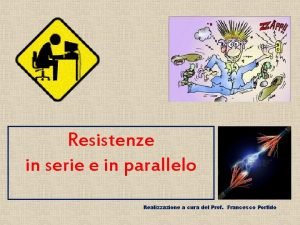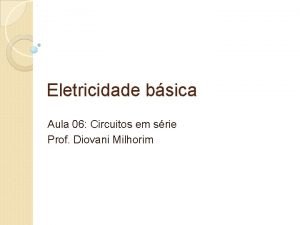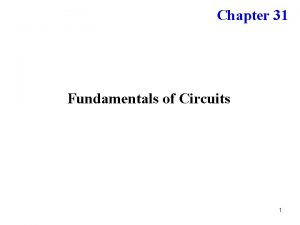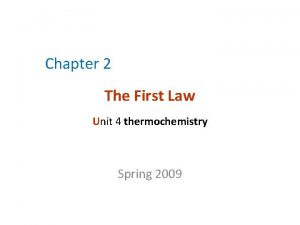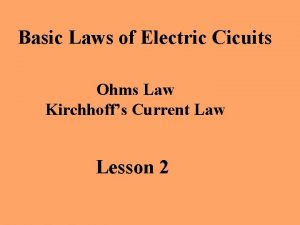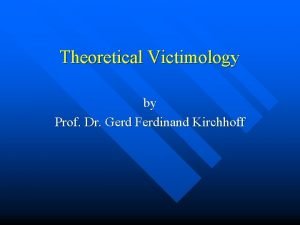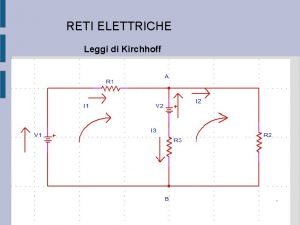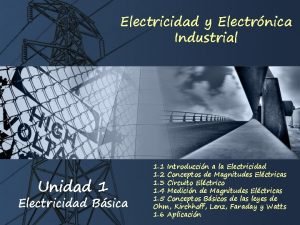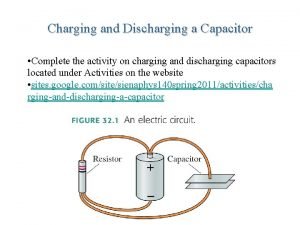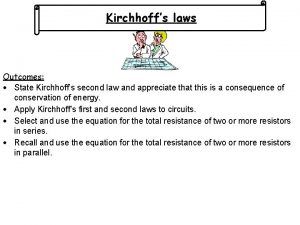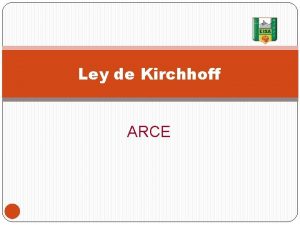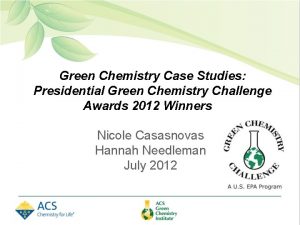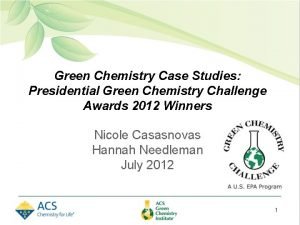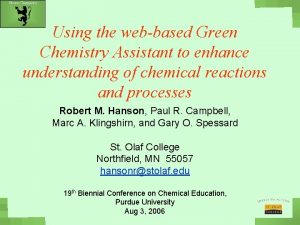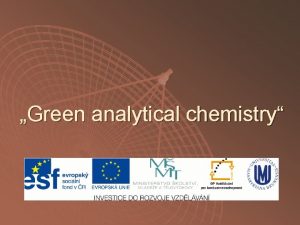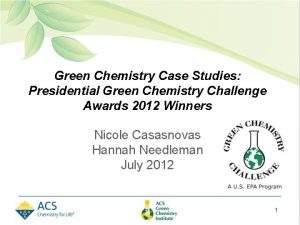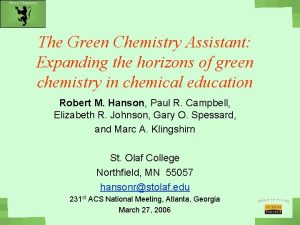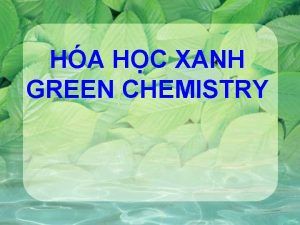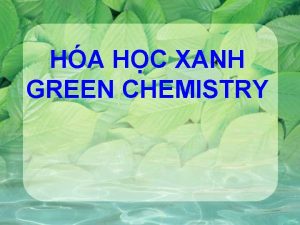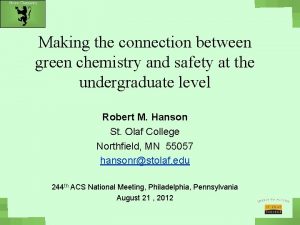Introduction to Green Chemistry Mary Kirchhoff Associated Colleges














































































- Slides: 78

Introduction to Green Chemistry Mary Kirchhoff Associated Colleges of the Chicago Area 16 September 2003

Green Chemistry u. Green Chemistry is the design of chemical products and processes that reduce or eliminate the use and/or generation of hazardous substances.

Historical Approach to Environmental Problems u. Waste treatment, control, and disposal; pollutant monitoring; hazardous waste site cleanup. u. Development of standards for emissions to air, releases to water, and disposal by land, as well as regulation of these standards. u“Command Control”

Growth in Environmental Regulation EPACT FFCA CERFA CRAA AMFA ARPAA AJA ASBCAA ESAA-AECA FFRAA FEAPRA IRA NWPAA CODRA/NMSPAA FCRPA MMPAA 120 110 100 APA SWDA CERCLA CZMIA COWLDA FWLCA MPRSAA CAAA CWA SMCRA SWRCA SDWAA 90 80 NAWCA RCRAA WLDI WQA NWPA ARPA 50 AQA FOIA 40 SDWAA SARA MPRSAA BLBA HMTA FWPCA MPRSA ESA CZMA NCA TAPA FEPCA PWSA MMPA 60 Laws Number of 70 AQ A FRRRPA SOWA DPA FCMHSA WRPA AFCA 30 TA FWCA BPA 20 10 RHA YA 0 1870 1880 1890 WA NBRA IA AA 1900 1910 NPS 1920 MBCA 1930 AEPA FHSA NFMUA FIFRA PAA FAWRA NLRA WPA 1940 1950 NHPA WLDA FWCAA FWA AEA 1960 1970 WSRA EA RCFHSA 1980 PPA PPVA IEREA ANTPA GLCPA ABA CZARA WRDA EDP OPA RECA CAAA GCRA GLFWRA HMTUSA NEEA 1990 BLRA ERDDAA EAWA NOPPA PTSA UMTRCA ESAA QGA NCPA TSCA FLPMA RCRA NFMA CZMAA NEPA EQIA CAA EPA EEA OSHA FAWRAA NPAA 2000

Environmental Expenditures & Economic Sustainability Source: R. R. Bezdek. , MISI - 1999

Pollution Prevention Act of 1990 Pollution Prevention Source Reduction Recycling Treatment Disposal

Green Chemistry u. Green Chemistry is the design of chemical products and processes that reduce or eliminate the use and/or generation of hazardous substances.

Characterization of Environmental Problems Risk = f(hazard x exposure) Traditionally, risk management has focused on exposure rather than hazard.

Circumstantial vs. Intrinsic Recognize hazard as a design flaw u Circumstantial Use n Exposure n Handling n Treatment n Protection n Recycling n Costly n u Intrinsic Molecular design for reduced toxicity n Reduced ability to manifest hazard n Inherent safety from accidents or terrorism n Increased potential profitability n

Why Green Chemistry? u “Business is going to get significantly more profitable through the application of green technology. Proactive companies are finding theme ‘good for business’ to be credible and real. ” Paul V. Tebo, Vice President for Safety, Health, and Environment, Du. Pont u We have found that voluntary environmental improvements - as encouraged by programs like EPA’s Green Chemistry Challenge. . . - can return as much as 53% on capital, compared with a negative 16% when improvements are mandated by law. ” William S. Stavropoulos, President and Chief Executive Officer, The Dow Chemical Company

Presidential Green Chemistry Challenge u. Goal: To promote pollution prevention and industrial ecology through a new EPA Design for the Environment partnership with the chemical industry. u. Challenge: To find cleaner, cheaper, and smarter ways to manufacture the products that we depend on.

Presidential Green Chemistry Challenge Awards u. Alternative synthetic pathways u. Alternative reaction conditions u. Designing safer chemicals u. Academic u. Small business

Twelve Principles of Green Chemistry 1. Prevention u 2. Atom Economy u 3. Less Hazardous Chemical Syntheses u 4. Designing Safer Chemicals u 5. Safer Solvents and Auxiliaries u 6. Design for Energy Efficiency u 7. Use of Renewable Feedstocks u 8. Reduce Derivatives u 9. Catalysis u 10. Design for Degradation u 11. Real-time Analysis for Pollution Prevention u 12. Inherently Safer Chemistry for Accident Prevention u

Principle 1 It is better to prevent waste than to treat or clean up waste after it is formed.

Redesign of the Sertraline Process u Sertraline: active ingredient in Zoloft u Combined process u. Doubled yield u. Ethanol replaced CH 2 Cl 2, THF, toluene, and hexane u. Eliminated use of 140 metric tons/year Ti. Cl 4 u. Eliminated 150 metric tons/year 35% HCl Pfizer

Redesign of the Sertraline Process

Principle 1: Waste prevention u Cytovene antiviral agent used in the treatment of cytomegalovirus (CMV) retinitis infections n AIDS and solid-tissue transplant patients n u Improved synthesis reduced chemical processing steps from 6 to 2 n reduced number of reagents and intermediates from 22 to 11 n eliminated 1. 12 million kg/year liquid waste n eliminated 25, 300 kg/year solid waste n increased overall yield by 25% n

Principle 2 Synthetic methods should be designed to maximize the incorporation of all materials used into the final product.

Principle 2: Atom economy u Traditional synthesis of ibuprofen 6 stoichiometric steps n <40% atom utilization n

Principle 2: Atom economy u Catalytic n n synthesis of ibuprofen 3 catalytic steps 80% atom utilization (99% with recovered acetic acid) BHC

Principle 3 Wherever practicable, synthetic methodologies should be designed to use and generate substances that possess little or no toxicity to human health and the environment.

Principle 3: Non-toxic substances u Disadvantages phosgene is toxic, corrosive n requires large amount of CH 2 Cl 2 n polycarbonate contaminated with Cl impurities n

Principle 3: Non-toxic substances u Advantages diphenylcarbonate synthesized without phosgene n eliminates use of CH 2 Cl 2 n higher-quality polycarbonates n Komiya et al. , Asahi Chemical Industry Co.

Alternative Synthetic Pathways u. Sodium iminodisuccinate n Biodegradable, environmentally friendly chelating agent n Synthesized in a waste-free process n Eliminates use of hydrogen cyanide Bayer Corporation and Bayer AG 2001 Alternative Synthetic Pathways Award Winner

Principle 4 Chemical products should be designed to preserve efficacy of function while reducing toxicity.

Principle 4: Reduce Toxicity u Spinosad: a natural product for insect control produced by Saccharopolyspora spinosa n isolated from Caribbean soil sample n demonstrates high selectivity, low toxicity n Dow Agro. Sciences

Designing Safer Chemicals u. Cationic electrodeposition coatings containing yttrium n Provides corrosion resistance to automobiles n Replaces lead in electrocoat primers n Less toxic than lead and twice as effective on a weight basis PPG Industries 2001 Designing Safer Chemicals Award Winner

Small Business Award u. PYROCOOL n PYROCOOL Technologies, Inc. F. E. F. (Fire Extinguishing Foam) n 0. 4% aqueous mixture of highly biodegradable nonionic surfactants, and amphoteric surfactants n replacement for halon gases and aqueous film forming foams (AFFFs)

ACQ Wood Preservatives u Pressure-treated lumber u 7 million board feet/year u chromated copper arsenate (CCA) preservative u 40 million pounds of arsenic u 64 million pounds of hexavalent chromium u Alkaline Copper Quaternary (ACQ) wood preservative u Bivalent copper complex plus quaternary ammonium compound dissolved in ethanolamine of ammonia u Virtually eliminates use of arsenic in US u Avoids production, transportation, use, and disposal risks associated with CCA Chemical Specialties, Inc.

Principle 5 The use of auxiliary substances (e. g. solvents, separation agents, etc. ) should be made unnecessary wherever possible and, innocuous when used.

Principle 5: Benign solvents u Carbon-carbon n bond formation in water Diels-Alder, Barbier-Grignard, pericyclic u Indium-mediated cyclopentanoid formation Li, Tulane University

Research to Commercialization: Thomas Swan & Co Ltd u Multi-purpose plant using supercritical fluids u First full-scale facility for continuous, multi-purpose synthesis, including u Hydrogenations u Friedel-Crafts reactions u Hydroformylations u Etherifications u Technology Nottingham developed with the University of

Reactions in Supercritical Fluids u Formation of cyclic ethers u Hydrogenation Poliakoff, University of Nottingham

CO 2 for Dry Cleaning u. Dry Cleaning n current process uses perc (perchloroethylene), a suspected carcinogen and groundwater contaminant n new process uses liquid carbon dioxide, a nonflammable, nontoxic, and renewable substance

Non-Fluorous CO 2 -Philic Materials u Replacement for expensive, persistent fluorous CO 2 -philes u New CO 2 -philes needed to expand commercial applications of CO 2 u Poly(ether-carbonates) u Lower miscibility pressures than perfluoropolyethers u Biodegradable u 100 times less expensive Beckman, University of Pittsburgh

Principle 6 Energy requirements should be recognized for their environmental and economic impacts and should be minimized. Synthetic methods should be conducted at ambient temperature and pressure.

Principle 6: Minimize energy usage u Catalytic synthesis of ULTEM® thermoplastic resin 25% less energy required to produce each pound of resin n volume of organic waste stream for off-site disposal decreased by 90% n 50% less catalyst used n GE Plastics (General Electric Corporation)

Alternative products u. Thermal Polyaspartic Acid (TPA) ncatalytic polymerization process nbiodegradable polymer nsubstitute for non-biodegradable polyacrylic acid (PAC) Donlar Corporation

Principle 7 A raw material of feedstock should be renewable rather than depleting wherever technically and economically practicable.

Adipic Acid Synthesis u Contributes 2% anthropogenic N 2 O/year

Adipic Acid Synthesis u Recycles nitrous oxide into adipic acid synthesis n new pathway to phenol Solutia, Inc.

Adipic Acid Synthesis u No nitrous oxide generated u Renewable feedstock replaces petroleumbased feedstock Draths and Frost, Michigan State

Principle 7: Renewable feedstocks u Conversion n of waste biomass to levulinic acid paper mill sludge, municipal solid waste, unrecyclable waste paper, agricultural residues Biofine, Incorporated

Principle 7: Renewable feedstocks u CO 2 feedstock in polycarbonate synthesis u Improved Zn catalyst yields faster reaction, uses milder reaction conditions Coates et al. , Cornell University

Principle 8 Unnecessary derivatization (blocking group, protection/deprotection, temporary modification of physical/chemical processes) should be avoided whenever possible.

Boric Acid-Mediated Amidation u Direct amidation of carboxylic acids with amines u Boric acid: nontoxic, safe, inexpensive u Eliminates use of SOCl 2, PCl 3, phosgene u Widely applicable Emisphere Technologies, Inc

Principle 8: Derivatization u Enzymatic n synthesis of cephalexin eliminates protection/deprotection of functional groups

Principle 9 Catalytic reagents (as selective as possible) are superior to stoichiometric reagents.

Principle 9: Catalysis u. Improved synthesis of a central nervous system compound n interdisciplinary approach, combining chemistry, microbiology, and engineering u. For every 100 kg product, n 300 kg chromium waste eliminated n 34, 000 liters solvent eliminated Eli Lilly and Company

Principle 9: Catalysis

Principle 9: Catalysis u Synthesis n of disodium iminodiacetate (DSIDA) filter catalyst from waste stream, no additional purification required u Replacement n for the Strecker process utilized NH 3, CH 2 O, HCN, HCl Monsanto Company

Principle 10 Chemical products should be designed so that at the end of their function they do not persist in the environment and break down into innocuous degradation products.

Polylactic Acid u. Manufactured n Corn from renewable resources or wheat; agricultural waste in future u. Uses 20 -50% fewer fossil fuels than conventional plastics u. PLA products can be recycled or composted Cargill Dow

Alternative solvents u Solvent-free synthesis of polylactic acid polymers (PLA) lactic acid obtained from corn and sugar beets n condensation of aqueous lactic acid yields PLA pre -polymer n pre-polymer thermally depolymerized into L- and meso-lactide diastereomers n tin-catalyzed ring opening polymerization of lactide produces PLA high polymer n Cargill Dow Polymers LLC

Alternative products u Eastman Biodegradable Copolyester 14766 copolyester of adipic acid, terephthalic acid, and 1, 4 -butanediol n totally biodegrades to H 2 O, CO 2, biomass n reduces waste sent to landfills and incinerators n Eastman Chemical Company

Principle 11 Analytical methodologies need to be further developed to allow for realtime, in-process monitoring and control prior to the formation of hazardous substances.

Principle 11: Real Time Analysis u 1999: 10 million environmental samples analyzed u Analysis in support of state and federal regulatory programs used more than 2 million gallons of solvent u Spent waste solvent disposal cost is about $51 million

Principle 11: Real Time Analysis u. Ion Fingerprint Detection (IFD) software n MS peak deconvolution algorithms n Rapidly identifies and quantifies EPA targeted compounds by GC/MS n Sample cleanup not required in the presence of other targets and contamination n 90% solvent reduction for GC/MS analysis n 50% solvent elimination for LC/MS analysis n 10 -fold productivity gains Robbat, Jr.

Principle 12 Substances and the form of a substance used in a chemical process should be chosen so as to minimize the potential for chemical accidents, including releases, explosions, and fires.

Principle 12: Minimize hazard

Principle 12: Minimize hazard u Catalytically synthesize methylisocyanate to reduce risk of exposure n eliminates use of phosgene Manzer, Du. Pont

Green Chemistry u. Not a solution to all environmental problems. u. The most fundamental approach to preventing pollution. u. Recognizes the importance of incremental improvements.

2004 Green Chemistry Events u 227 th ACS Meeting, March 2004, Anaheim u Joe Breen Student Poster Session u Innovations in Green Chemistry Education u 8 th Annual Green Chemistry and Engineering Conference u June 29 – July 1, Washington, DC u Gordon Research Conference on Green Chemistry u July 4 -9, Bristol, RI u PRF Summer School on Green Chemistry

Student Affiliates u Host a green chemistry speaker u Develop a green chemistry activity with a local school u Organize a green chemistry poster session on campus u Work with a local company on a green chemistry project u Make a current lab experiment greener u Design a green chemistry web page

Student Affiliates u Benefits u. Recognition at the Student Affiliates Chapter awards ceremony at the spring ACS meeting u. Information on green chemistry internships and research opportunities u. Copies of green chemistry materials u. Connections to faculty engaged in green chemistry research

Green Chemistry Institute u. Working Today to Prevent Pollution Tomorrow Through u. Information Dissemination u. Chemical Education u. Awards and Recognition u. Conferences and Symposia u. Research and Fellowships u. International Outreach

The Major Challenges to Sustainability Population u Energy u Global Change u Resource Depletion u Food Supply u Toxics in the Environment u

Population u. Empirical data shows that increased quality of life correlates with sustainable population control. u. Increased quality of life, however, has historically resulted in increased damage to the biosphere and the earth’s ability to sustain life.

Population u. The challenge: How to increase quality of life while minimizing detrimental effects to human health, the environment and the biosphere. u. The solution: Green chemistry provides a mechanism to addressing this challenge in very real terms.

Energy u. The vast majority of the energy generated in the world today is from nonrenewable sources that damage the environment. n Carbon n dioxide Depletion Effects of mining, drilling, etc Toxics

Energy u. Green Chemistry will be essential in developing the alternatives for energy generation (photovoltaics, hydrogen, fuel cells, biobased fuels, etc. ) as well as n continuing the path toward energy efficiency with catalysis and product design at the forefront. n

Global Change u. Concerns for climate change, oceanic temperature, stratospheric chemistry and global distillation can be addressed through the development and implementation of green chemistry technologies.

Alternative Solvents/Reaction Conditions Award u. CO 2 blowing agent for manufacture of polystyrene foam sheet packaging n eliminates 3. 5 million pounds/year of chlorofluorocarbon blowing agents n carbon dioxide obtained from existing byproduct commercial and natural sources, no net increase in global CO 2 The Dow Chemical Company

Resource Depletion u. Due to the over utilization of nonrenewable resources, natural resources are being depleted at an unsustainable rate. u. Fossil fuels are a central issue.

Resource Depletion u. Renewable resources can be made increasingly viable technologically and economically through green chemistry. n n n Biomass Nanoscience & technology Solar Carbon dioxide Chitin Waste utilization

Food Supply While current food levels are sufficient, distribution is inadequate u Agricultural methods are unsustainable u Future food production intensity is needed. u Green chemistry can address many food supply issues u

Food Supply u Green chemistry is developing: Pesticides which only affect target organisms and degrade to innocuous byproducts. n Fertilizers and fertilizer adjuvants that are designed to minimize usage while maximizing effectiveness. n Methods of using agricultural wastes for beneficial and profitable uses. n

Toxics in the environment Substances that are toxic to humans, the biosphere and all that sustains it, are currently still being released at a cost of life, health and sustainability. u One of green chemistry’s greatest strengths is the ability to design for reduced hazard. u
 Mary kirchhoff
Mary kirchhoff Yellow light
Yellow light Kirchhoff's law chemistry
Kirchhoff's law chemistry Mary wollstonecraft mary a fiction
Mary wollstonecraft mary a fiction Ib chemistry functional groups
Ib chemistry functional groups Inorganic chemistry vs organic chemistry
Inorganic chemistry vs organic chemistry Alamo colleges faculty salary schedule
Alamo colleges faculty salary schedule World federation of colleges and polytechnics
World federation of colleges and polytechnics Ontariocolleges login
Ontariocolleges login Alamo colleges 1098 t
Alamo colleges 1098 t First aid for colleges and universities
First aid for colleges and universities Ccccio
Ccccio Chief instructional officers california community colleges
Chief instructional officers california community colleges Brevet des colleges
Brevet des colleges Colleges for forensic ballistics
Colleges for forensic ballistics Styria colleges and universities
Styria colleges and universities Ufa state petroleum technological university
Ufa state petroleum technological university Columbia university ib requirements
Columbia university ib requirements Restoration movement colleges
Restoration movement colleges Chelyabinsk state university
Chelyabinsk state university Chon buri colleges and universities
Chon buri colleges and universities Yaroslavl state technical university
Yaroslavl state technical university Workday implementation lessons learned
Workday implementation lessons learned Who's who in american colleges and universities
Who's who in american colleges and universities Association of schools and colleges of optometry
Association of schools and colleges of optometry Ocicu
Ocicu Menulis seluruh kegiatan
Menulis seluruh kegiatan Community colleges
Community colleges Community education and training colleges in south africa
Community education and training colleges in south africa Washington state board for community and technical colleges
Washington state board for community and technical colleges Different types of colleges
Different types of colleges Northern ireland colleges
Northern ireland colleges Sakai claremont colleges
Sakai claremont colleges New england association of colleges and schools
New england association of colleges and schools Mtcu sudbury hours
Mtcu sudbury hours Cccco guided pathways
Cccco guided pathways Community colleges
Community colleges Tvet colleges limpopo
Tvet colleges limpopo Forprofit colleges
Forprofit colleges Association of florida colleges
Association of florida colleges Ciip canada
Ciip canada Accrediting commission of career schools and colleges
Accrediting commission of career schools and colleges Atom economy green chemistry
Atom economy green chemistry 12 principles of green chemistry with examples
12 principles of green chemistry with examples Antifoulant green chemistry
Antifoulant green chemistry Define green chemistry
Define green chemistry Green chemistry def
Green chemistry def E factor green chemistry
E factor green chemistry Acs gci pharmaceutical roundtable
Acs gci pharmaceutical roundtable Green chemistry book by chandrakanta bandyopadhyay
Green chemistry book by chandrakanta bandyopadhyay Ionic liquid ppt
Ionic liquid ppt Atom economy formula
Atom economy formula Conclusion of green chemistry
Conclusion of green chemistry Acs green chemistry
Acs green chemistry Peter dunn viagra son
Peter dunn viagra son Lernpyramide von green & green (2005)
Lernpyramide von green & green (2005) Red green yellow blue
Red green yellow blue Frc control system
Frc control system La corrente elettrica continua zanichelli ppt
La corrente elettrica continua zanichelli ppt Resistenza equivalente in serie
Resistenza equivalente in serie Componenti circuitali
Componenti circuitali Legea lui kirchhoff
Legea lui kirchhoff Ley de kirchhoff
Ley de kirchhoff Calcular resistencia
Calcular resistencia Wet van kirchhoff
Wet van kirchhoff Kirchhoff loop rule
Kirchhoff loop rule Kirchhoff's law of thermochemistry
Kirchhoff's law of thermochemistry Kirchhoff's current law examples
Kirchhoff's current law examples Prof. dr. kirchhoff
Prof. dr. kirchhoff Legea lui kirchoff
Legea lui kirchoff Legge di kirchhoff
Legge di kirchhoff Kirchhoffs junction rule
Kirchhoffs junction rule Kirchhoff institute for physics
Kirchhoff institute for physics Leyes de ohm kirchhoff lenz faraday y watt
Leyes de ohm kirchhoff lenz faraday y watt Kirchhoff law exercises
Kirchhoff law exercises Leyes de kirchhoff
Leyes de kirchhoff Bunyi hukum kirchoff 1
Bunyi hukum kirchoff 1 A primeira lei de kirchhoff
A primeira lei de kirchhoff Kirchhoff's 2nd law
Kirchhoff's 2nd law
